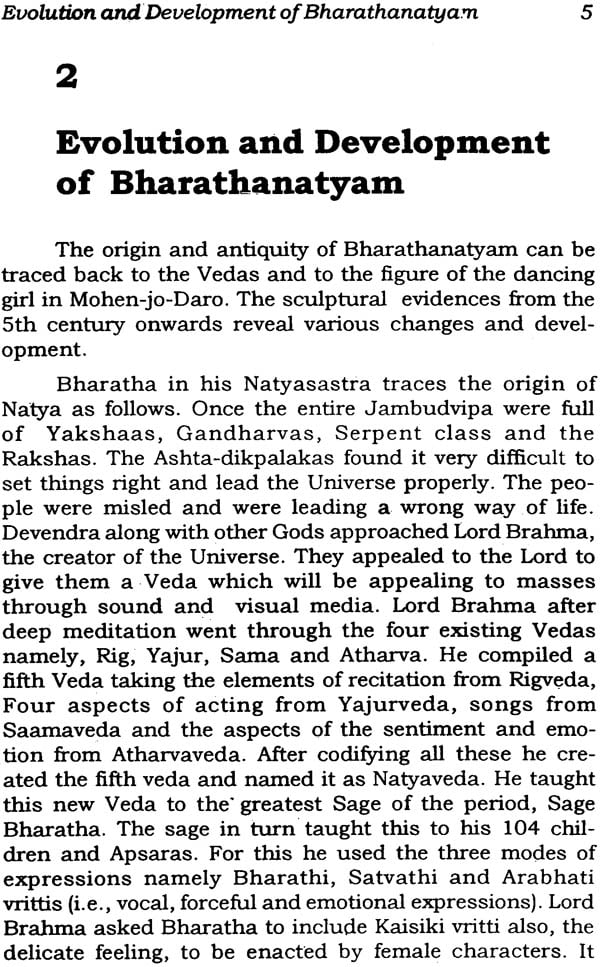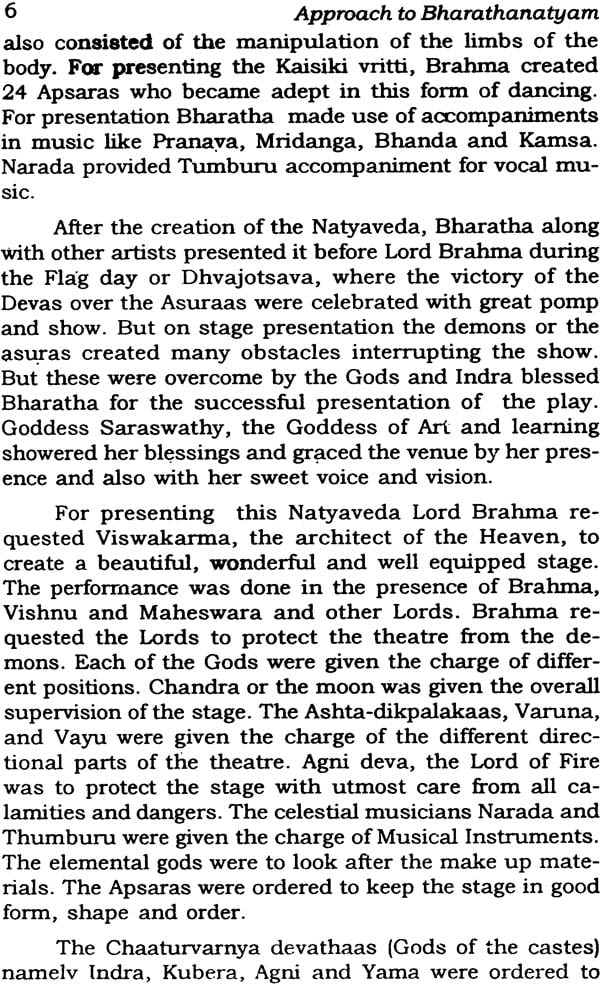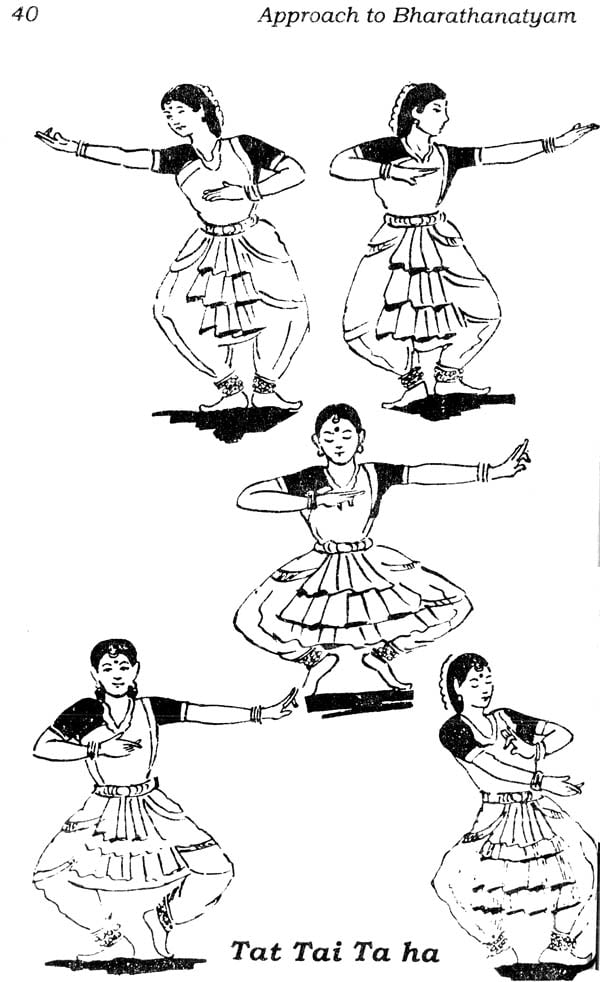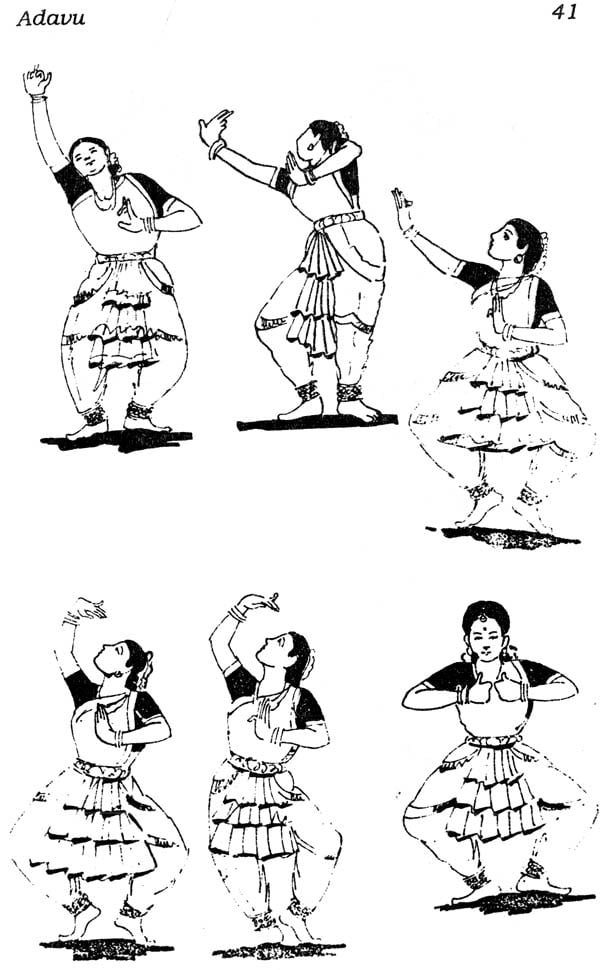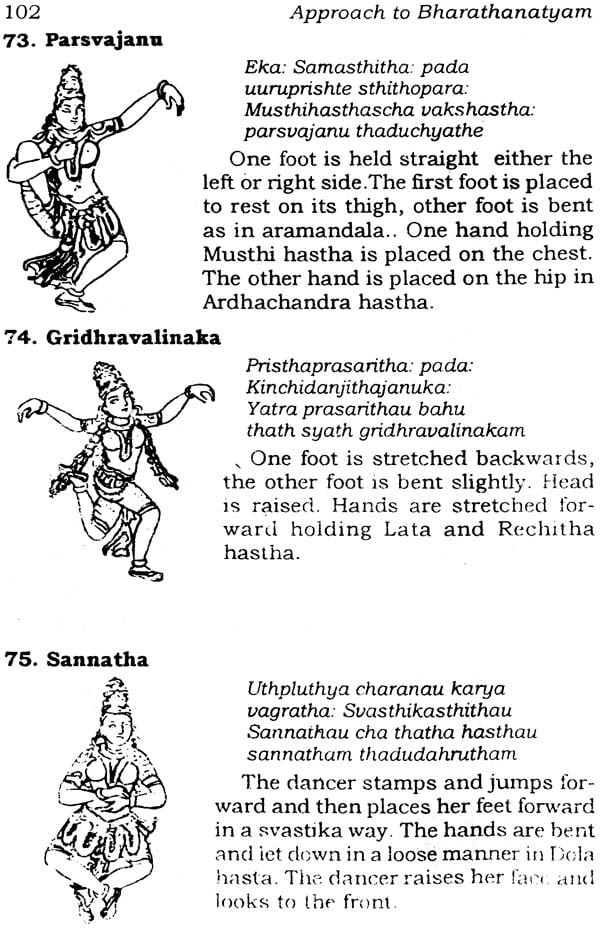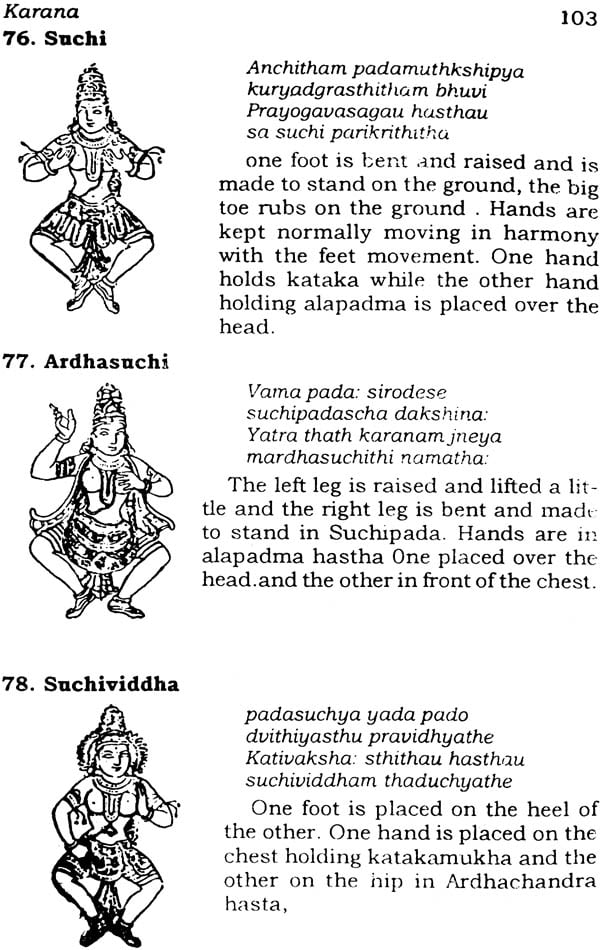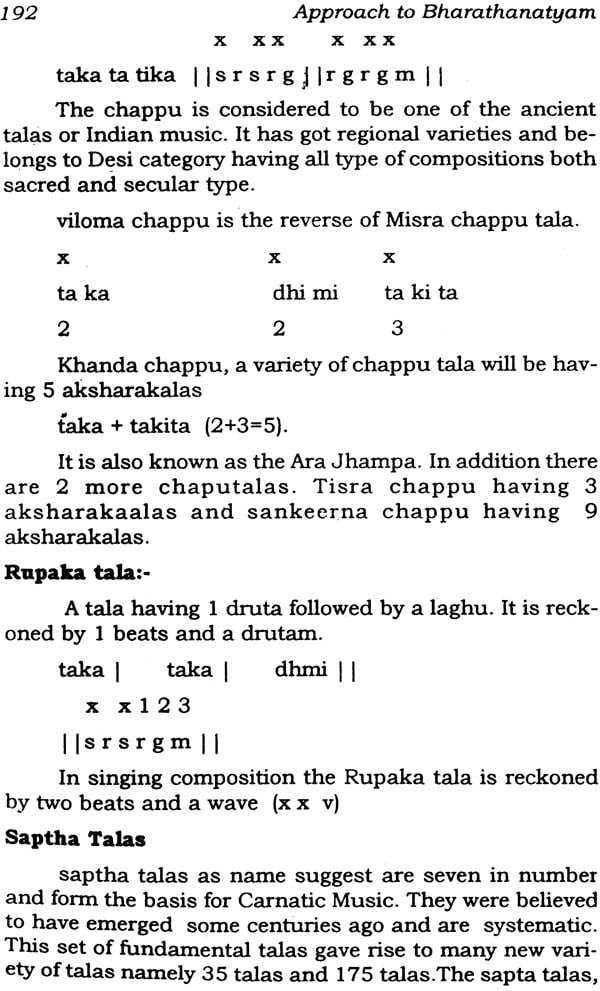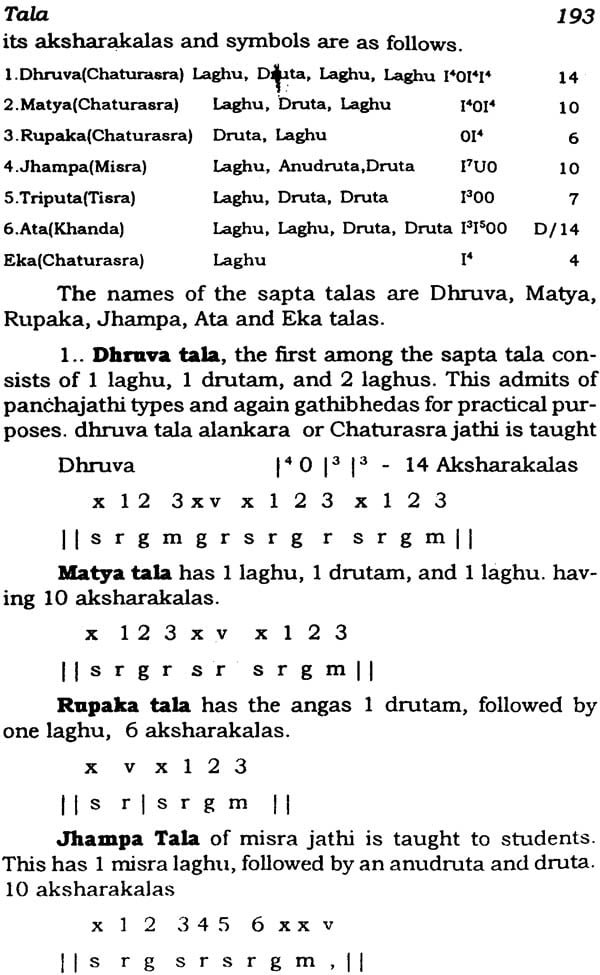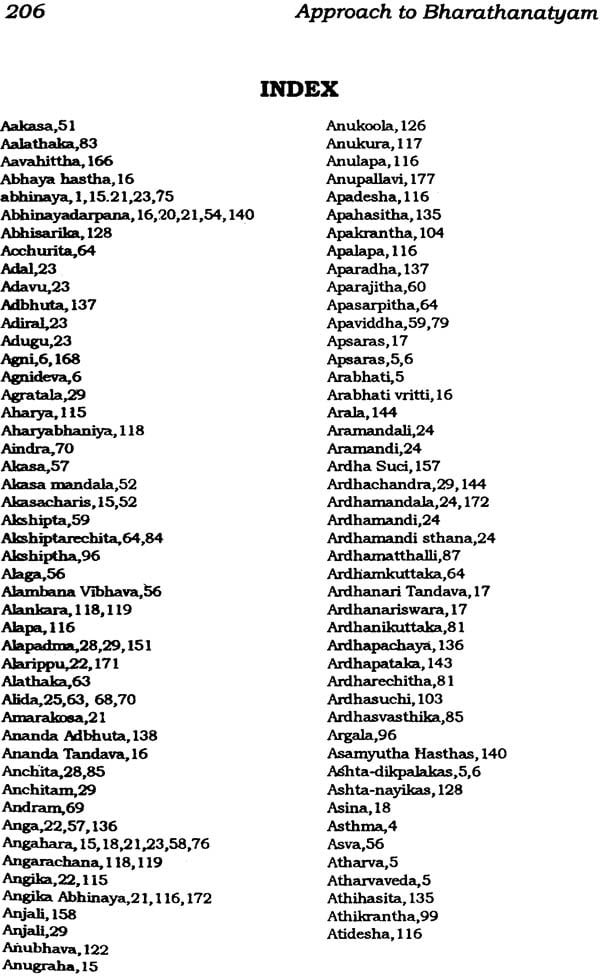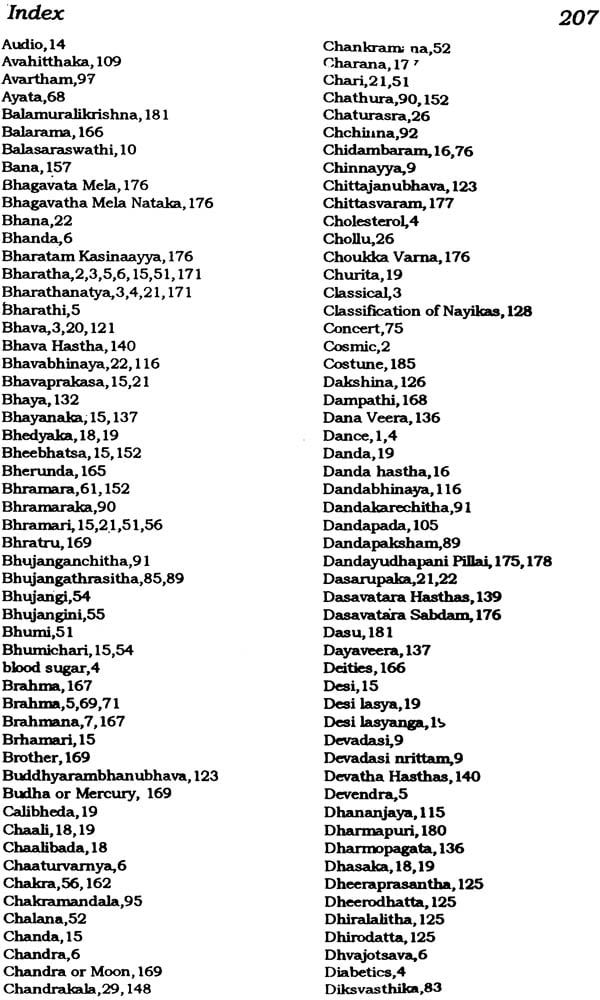
Approach To Bharathanatyam
Book Specification
| Item Code: | IDK998 |
| Author: | Dr. S. Bhayalekshmy |
| Publisher: | CBH Publications |
| Language: | English |
| Edition: | 2019 |
| ISBN: | 8185381186 |
| Pages: | 224 (Illustrated Throughout In B/W) |
| Cover: | Paperback |
| Other Details | 8.6” X 5.6” |
| Weight | 200 gm |
Book Description
Indian classical dance is very complex. A layman who sees a performance may think that it is easy to perform many of the actions of the dancer. But the truth is that a correct and a graceful step or expression can be perfected only after many years of rigorous training and practice. It is true of all classical dance forms of India. In writing about the technical aspects of dance I had faced many constraints. Demonstrating a step or Mudra or expression is easy for a good performer. The person who sees it also understands it better. But when we describe a step, a mudra or Abhinaya the ide’ can never be brought home hundred percent. It can be compensated to tried to define and describe the basic technical aspects of dance, mudras Adavus and Karanas in a simple way as far as possible However I agree that this will not supplement the understanding of the technical details through visualiation.
In the arrangements of sequence of chapters I have kept in mind a lay reader/student of Bharathanatyam. In the Second edition of this book, I have introduced and thoroughly edited the text and content of the chapters. I have added three new chapters comprising the history and evolution of Bharathanatyam, Stage as designed by sage Bharatha, Tandava and Lasya. The subsequent chapters have been rearranged consisting of Nritta, and Nritya onwards takes the reader to the different kinds of presentation of Bharathanatya, and technical details have been developed. The sequence of chapters like Adavus, Charis, Gathis, Padabhedas, Angaharas, Karanas, Abhinaya, Bhava, Rasa, Hasthas and Forms of Bharathanatyam, cover the entire aspects of Bharathanatyam. Three new chapter, namely, Navasandhi, Costumes, and Tala have been added to makethe book more useful to the performing artist and convey a fundamental knowledge about these aspects which are they difficult to find in a book of Bharathanatyam, but the knowledge of which are very much essential for a performer. The Sanskrit slokas in transliteration have been provided to make the learned reader to comprehend better the technical details has been illustrated fully with diagrams. The explanation of slokas in the case of Karanas and Hasthas has been necessitated due to their comprehensiveness. The illustrations have also been made to represent the original ideas of the text. In the chapter on rasa I have included a set of photographs of Rasa. It was the best way to depict the nine Rasas in their true form.. To understand the technical terms a glossary has been provided at the end of the book. A comprehensive index is provided to make it can easy reference text.
In preparing this text I have made extensive references to valuable books like Natyasastra, Abhinayadarpana etc., which are classical masterpieces and which offer inexhaustible material for research students. Without the help of these classical a study of Indian Dances is not possible.
I am thankful to Sri Vikraman, for preparing the hand-drawing of the Adavus, and Padabhedas and to the publisher for providing the illustrations on Karanas and Hasthas.
I earnestly hope that this book will found useful by the students of Bharathanatyam as well as learned exponents of Bharathanatyam and other dances. I will be happy to receive bouquets and brickbats from about the book.
Among the fine Arts, Dance or Natya forms a major Branch. It is considered as one of the most popular and highly sacred from of worshipping the Lord. It can be considered as an embodiment of mythological, historical , culture and sociological heritage and traditionally passed on to posterity. Dancing is actually a mirror which visualises sound into visual representation. It is also an eternal bliss and the treasure house of the physical, intellectual and spiritual knowledge. Human beings, from the primitive period strongly believed that dancing was the most pleasing art form of the Gods and Goddesses and was the best path to attain Moksha or Salvation. The knowledge of this divine art form directly and indirectly dealt with the Soul and Ultimate of all the three worlds.
As one of the major from of fine art, dancing appeals to every one irrespective of caste, creed, tribe etc. it also provides entertainment and pleasure to all class of masses. According to many scholars dancing is considered as a mantrapushpam having the magical power to provide the source of happiness to people and nations around the Universe.
The artist in dance uses and translates the language of the poet into abhinaya, just like a musician gives music to a poem. The dancer also interprets the meaning, the theme context and the background which leads to the birth of a particular poem. Dance is occasioned by no needs. It is a thing of beauty appreciated and loved each and every one who sees it. It is also an epitome of many arts eulogized as being the source of amusement on occasions of marriage, child birth, general festivals and attainment of prosperity.
Bharatha in his Natyasastra says that dance or Natya implied in it, the three forms of fine arts namely, Nataka, Natya and Sangeetha. (Iyal, Isai, and Natakam) according to him “there are no limitations of theme or context in dance hence it represented the exploits of Asuras, Kings, and ordinary human being”. He further says “there is no wisdom, no knowledge, no art, no craft, no device, no action, that is not to be found in Natya.
The importance of Natya and its association with temples were realised long ago. The importance of Dance was also cited in Sikshas, Prathisakhyas, Puranas, etc. In Vishnudharmotthara Purana it is given as follows, “To worship God by Nrittha is to fulfil all desires and also to unfold the path of salvation”
From ancient times, dancing was performed for the welfare of the people and by those who strived ceaselessly for protection and also for those who strived ceaselessly for protection and also for those who attained victory over other three worlds. The Trimurthis were associated in one or other form of dancing. Lord Nataraja is considered as the Lord of dance. Siva’s dancing symbolized the Cosmic rhythm in its endless movement of Srishti, Sthithi and Samhaara, i.e., creation, revelation and destruction.
Dancing also was considered as the representation of the unceasing rhythm of the Cosmic world. It also represented the principles of unity and multiplicity. Further dance in ti reflected the various aspects emotional ideas, expressions and movement of the face.
While tracing the origin of dance, we come across different traditions and disciplines. It is a well known fact that the existence of any art form mainly depended on traditions and eminent experienced teachers. The teachers played a prominent role in the preservation of these dances and passed it on from generation to generation, orally and traditionally. It is the teachers who gave life to this art form through their selfless and staunch devotion. These Acharyas took dancing as their profession and taught it to students in the Sastraic and traditional manner. An important fact to be noticed is that any art for form will and can flourish and nourish only when there exited a smooth relationship between the teachers and the students.
Indian Dance attained culture heritage and traditions having its own individuality and dignity. Indian dances have been always associated with the temples in India from ancient times.
India has to its credit both classical and folk type of dance. The four major classical dances are of regional origin. They are Bharathanatyam, Kathak, Manipuri, and Kathakali. These four classical dance forms evolved in the four states in namely Tamilnad, Uttar Pradesh, Manipur, and Karela respectively.
Bharathanatyam has been considered a pure from of classical dance form and it originated in Tamilnad. It had its roots in Tanjore, Kumabakonam, Vazhvur etc. Bharathanatyam has become a world wide dance form having different schools and sarpradayaas. In its pure and sacred form one can find the very essence of Bhava, Raga, Tala and Rasa aspects.
The term Bharathanatyam is believed to have its origin from Natyasastra. One opinion is that the dance invented by Bharatha came to be called as Bharatha Natya. An other version is that the dance combined in it the aspects of dharma, music, stage, color and rhythm, poetry etc. Even the term Bharatha is codified by taking the initial syllables of Bhava, Raga and Tala. In Bharathanatyam bhava is not only facial expression but it is harmonic with the music having an intense devotion and uplifting emotion. Its key note is its appeal to the masses and the classes to the senses as well as to the Soul, to the dancer as well as to the audience. Its greater ability is to give spiritual revelation to each and every one and to lift one from the temporal to the eternal.
Natya or dance like any other physical exercise provides necessary physical movements to each and every part of the body. The whole body is involved in dancing and the whole body system is put into action. The performance of Bharathanatyam involves the mental alertness and induces on the performer a mental happiness and preserves the physical beauty. The performance of Bharathanatyam involves the total development of the mind and the body and thereby improves on the overall performance of the person. Since the performance involves the feet, hand, face, eyes, the whole body, the impact on the total health of the performer is manifold as the whole body system gets the benefit of the performance.
Dancing is considered to be an ideal medicine for controlling Asthma, Diabetics, Rheumatism etc. It also maintains the level of Cholesterol, blood sugar and other important factors in the blood. In addition to provide intellectual and physical entertainment and fervour dancing also enhances the spiritual atmosphere of the human being. It has got the magical power of warding off many severe illness, chronic ailments without severe medical treatment.
The continued performance and practice of Bharathanatyam brings a total mental and physical alertness to the artist.
| 1. | introduction | 1 |
| 2. | Evolution and development of Bharathanatyam | 5 |
| 3. | Stage as designed by Sage Bharatha | 11 |
| 4. | Tandava and Lasya | 15 |
| 5. | Nritta, Nritya and Natya | 20 |
| 6. | Adavu | 23 |
| 7. | Chari, Gati Utpalavana and Bhramari | 51 |
| 8. | Angahara | 58 |
| 9. | Padabheda | 68 |
| 10. | Karana | 75 |
| 11. | Abhinaya | 115 |
| 12. | Bhava | 121 |
| 13. | Nayaka-Nayikabheda | 125 |
| 14. | Rasa | 130 |
| 15. | Hasthas or Hand gestures | 139 |
| 16. | Forms of Bharathanatyam | 171 |
| 17. | Navasandhi | 182 |
| 18. | Costumes | 184 |
| 19. | Talam | 187 |
| Glossary | 203 | |
| Index | 206 |
